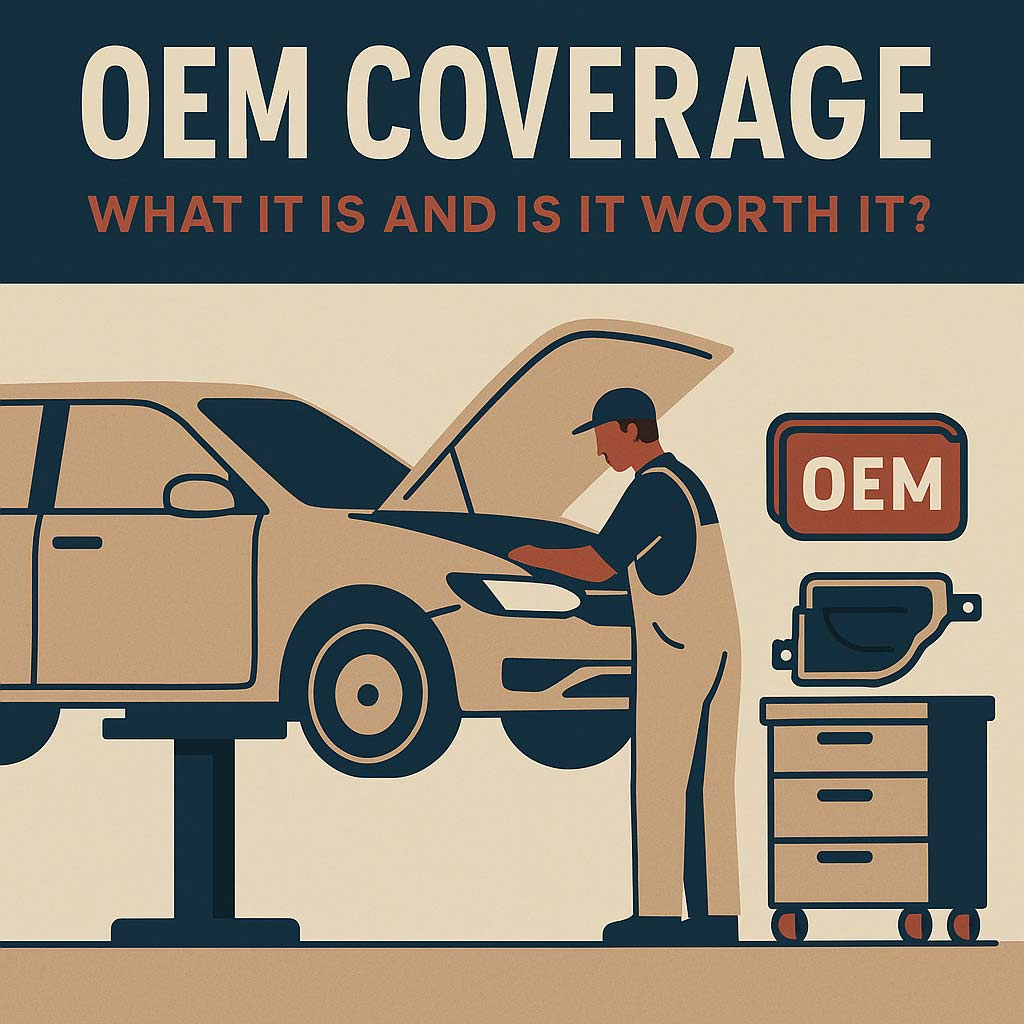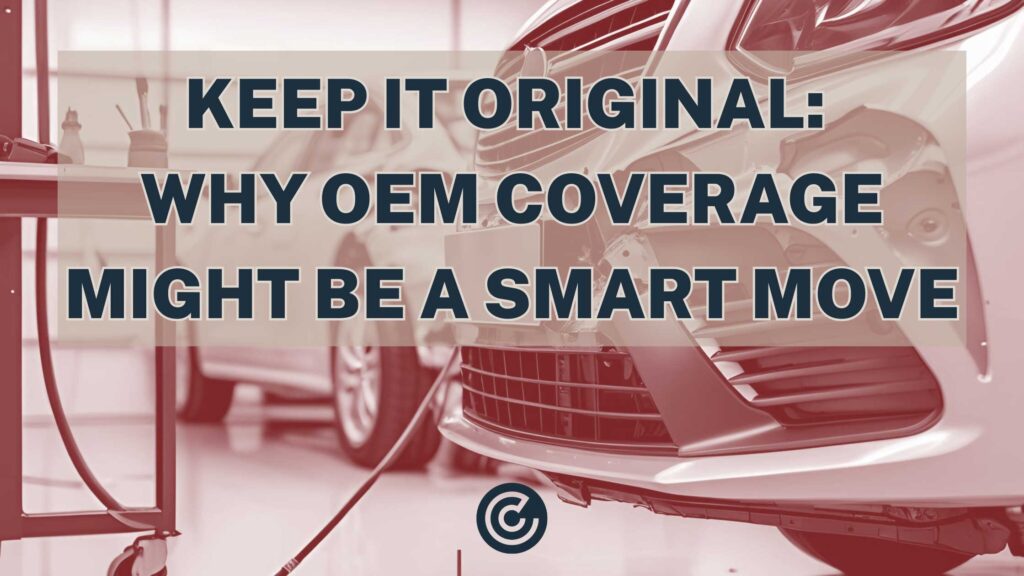If you’ve ever been in a car accident, you know how important it is to get your vehicle repaired properly. But not all replacement parts are created equal. That’s where OEM Coverage comes in—a little-known but highly valuable option in your auto insurance policy that could make a big difference in how your car is repaired.
🔍 What Is OEM Coverage?
OEM stands for Original Equipment Manufacturer. In simple terms, OEM Coverage ensures that if your car needs repairs after a covered accident, only original parts made by your car’s manufacturer will be used—not aftermarket or generic versions.
For example, if you drive a Toyota and need a new bumper, OEM Coverage would pay for a genuine Toyota bumper, rather than a third-party part.

🛠️ OEM vs. Aftermarket Parts: What’s the Difference?
Feature
Manufacturer
Fit & Finish
Warranty
Cost
OEM Parts
Made by your car’s automaker
Exact match for your vehicle
Often covered under manufacturer warranty
Typically more expensive
Aftermarket Parts
Made by third-party manufacturers
May have slight variations
May have limited or no warranty
Usually cheaper
🚙 Is OEM Coverage Worth It?
In many cases—yes, especially for newer vehicles or if you plan to keep your car for a long time. Here’s why:
✅ Better Fit & Performance: OEM parts are designed specifically for your car model, which can result in better safety, function, and aesthetics.
✅ Maintains Vehicle Value: Keeping your vehicle as close to factory-original as possible can help maintain resale value.
✅ Peace of Mind: You know exactly what you’re getting—no guessing about compatibility or quality.
⚠️ What’s the Catch?
OEM Coverage isn’t automatically included in most auto policies. In Colorado, it’s usually offered as an optional endorsement. This means you’ll need to request it and pay a little extra.
The cost varies depending on your vehicle, insurer, and policy, but it’s typically a small price to pay for the added assurance.
Also worth noting: Some policies only offer OEM parts for vehicles under a certain age—often 2 to 5 years old. After that, coverage may revert to aftermarket unless otherwise specified.
🏔️ Why It Matters in Colorado
With harsh winters, unpredictable hailstorms, and rugged mountain driving, Colorado drivers are no strangers to fender benders and damaged vehicle parts. If your car takes a hit, you’ll want repairs that restore its original condition—not just close enough.
Plus, Colorado’s high altitude and variable climate can sometimes highlight flaws in lower-quality aftermarket parts—making OEM coverage a smarter long-term play.
💬 The Bottom Line
OEM Coverage is a smart investment for Colorado drivers—especially if you drive a newer vehicle or care about preserving manufacturer quality and resale value. It may not be necessary for every driver, but for many, it provides added peace of mind and protection when it matters most.
Still Not Sure If It’s Right for You?
Every driver’s situation is unique. At Conexus Insurance Partners, we’re here to walk you through your options and help you build a policy that fits your life and your vehicle.
Let’s talk OEM coverage and whether it makes sense for your auto insurance in Colorado. Reach out today and we’ll explain everything clearly and thoughtfully, with honest and helpful advice.
